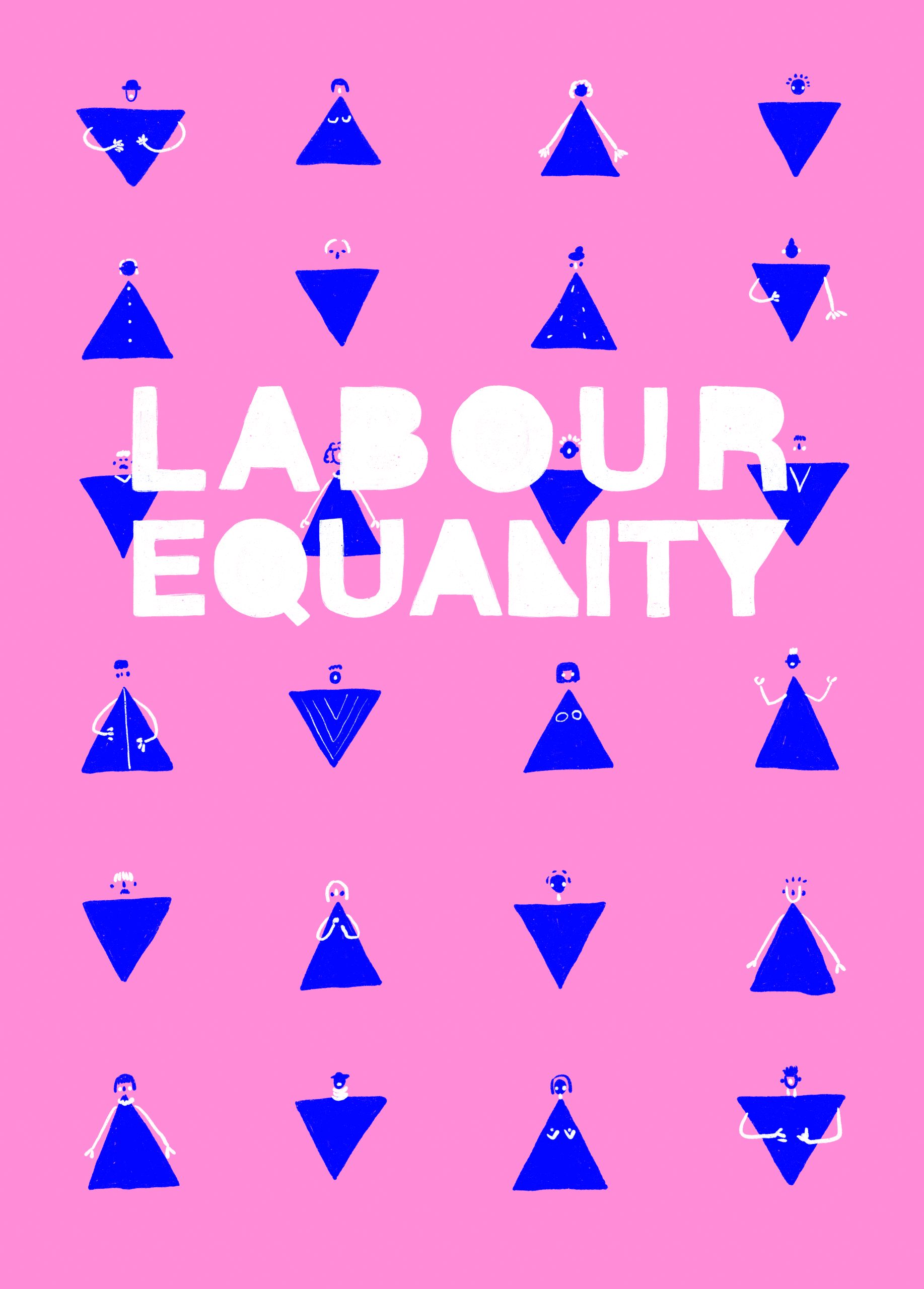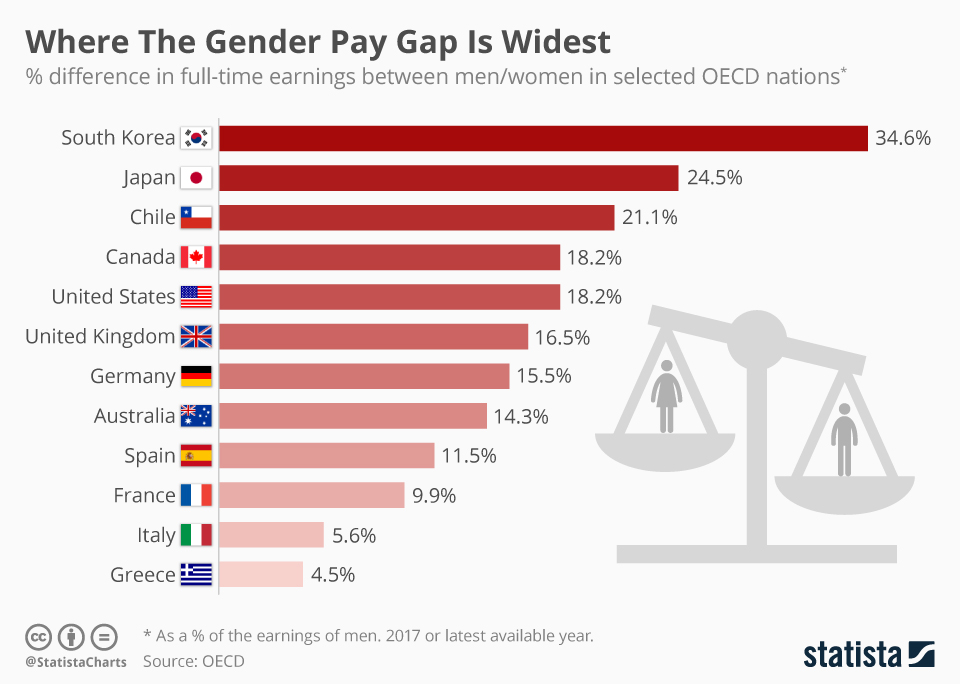3.5 Employment Standards and Employment Equity
HR managers pay a central role in making sure that organizations meet different legal requirements. The actions of HR managers, and company managers, can often be reactive rather than focused on education and prevention. Effective HRM practices require a proactive approach to employment standards and employment equity and the law.
Employment Standards Legislation
Employment standards legislation is a federal law that sets out a minimum employee wage and sets out limits on the maximum number of hours an employee is allowed to work per day or per week. All employees in Canada are covered under the employment legislation. The law includes wages, paid holidays and vacation time. As well, it covers maternity, adoption and parenting; bereavement, compassion care; termination of employees; and employee overtime worked.
Employment Standards Act:
https://www.ontario.ca/document/your-guide-employment-standards-act-0
All provinces and territories in Canada have legislation related to equal pay for equal work. Mostly, this legislation is included in the employment standards legislation. If not, it would be considered part of human rights legislation. Equal pay for equal work ensures that employees receive the same wage for the same work completed, or equal value. Employment equity is about “equal pay for work of equal value (Canadian Human Rights Commission, n.d.).”
Employment Equity Act

The Charter of Rights and Freedoms requires employment equity programs. These programs go beyond human rights laws by protecting employees from discrimination and developing programs to prevent any discrimination in the future. Everyone deserves to be treated equally and not discriminated against in their place work. However, there were certain groups identified who were treated differently. Some of the identifiers were lower wages, employment segregation, higher unemployment, were not being promoted and underemployed.
The Employment Equity Act is federal legislation that serves to enable equality in the workplace by addressing the barriers to employment as faced by members of the four designated groups:
- Women
- Aboriginal peoples: persons who are Indians, Inuit, or Métis
- Persons with disabilities: persons who have long term physical, mental, sensory, psychiatric, or learning disabilities
- Visible minorities: persons who are non-Canadian in race or non-white colour (Government of Canada, 2007).
HR and the Employment Equity Plan
The Employment Equity Act requires companies to create equity plans. HR departments play a major role in designing employment equity plans. The four designated groups are identified to find out if there is underrepresentation. Policies and practices need to be developed or reviewed, and employers must implement the plan to remove barriers for the four groups. The plan includes:
-
- Ensure a strong commitment from senior officials
- Conducting an analysis of the workplace to determine who the employees are who are under represented in the four designated groups. Only employees who self-identify are counted in the numbers.
- Conduct a review of current policies and practices to identify any employment barriers
- Employment Equity Plan is created with positive practices in short term (1-3 years) for hiring, training, retaining and promoting employees of the designated groups to eliminate barriers. Timetables are included to implement the practices. The plan also includes longer term goals to improve representation of the four designated groups. (operational, implementation, monitoring, evaluation, revisions)
Below is an in-depth look at how to implement an Employment Equity Plan
The Implementation of Employment Equity in Organizations
Informed and proactive employment equity policies and practices for any organization requires ongoing support and maintenance at all levels. HR departments are responsible to ensure the Employment Equity Plan is created and implemented. Six steps are critical to a success plan.
- Senior Management and Engagement
- Demographic Data and Analysis
- Employment Practices
- Operational Plan
- Implementation
- Monitoring, Evaluation and Revision
Senior Management Commitment and Engagement
As is the case with most HRM initiatives, obtaining senior management commitment is essential. A written policy describing equity that is widely communicated, visible to everyone and discussed frequently, as it fosters a more supportive culture. For example, Lightspeed is a very successful Montreal-based company whose CEO has fully embraced diversity and inclusivity (Bay Street Bull Staff, 2020). From top management, employment equity should be put in the hands of a senior manager, joint-labour management committees, and employment equity advisory committees.
Demographic Data and Analysis
Under the employment equity act, employers may gather data on members of designated groups as long as employees voluntarily agree to be identified or identify themselves as members of designated groups, and the data must only be used for employment equity and reporting purposes.
Two types of information can be used to provide an internal assessment of diversity in an organization.
- Stock data shows the status of designated groups in occupational categories and compensation levels.
- Flow data, is more dynamic and provides a profile of the employment decisions affecting designated groups (i.e., interview results broken down by gender of applicants). To obtain this information a voluntary self-identification questionnaire is distributed to employees.
Employment Practices
Employment systems or “employment practices” are those processes by which employers carry out personnel activities such as recruitment, hiring, training and development, promotion, job classification, discipline, and termination. These activities are scrutinized to ensure that they are fair and do not exclude members of certain groups. At the core of this review is to ensure that employment policies or practices are based on criteria that are job related. Also, as specified earlier, it is important that the principle of reasonable accommodations be respected and that the organization attempts to adjust the working conditions or schedules of employees, such as redesign job duties, adjust schedules, and upgrade facilities to accommodate them.
Operational Plan
The workforce analysis and the review of the employment system provides the employer with a useful base from which to develop a diversity work plan with realistic goals and timetables. This work plan is a document that describes how proposed actions are to be achieved. For example, the city of Montreal is trying to diversify its police force members, the objective being to increase the proportion of visible minorities so that it mirrors the diversity of Montreal’s population (Visible minorities make up 34 percent of Montreal’s population, according to the 2016 census (Statistics Canada, 2016). There were only 359 visible minority officers of the 4,456-member force in 2019 (8%), compared to 310 (7%) in 2014. For many, this mere one percent increase in five years is not sufficient and the city has engaged in a series of recruiting events in specific neighbourhoods to try to increase the number of minority applicants (Maratta, 2020).
Implementation
Each plan is unique to each organization. Some may target specific occupations or designated groups while others may be more general. The success of these plans depends on top management’s commitment to the process, how the roles are defined, the resources available, and the effectiveness of communication strategies.
Evaluation, Monitoring, and Revision
Using hard data (stock and flow) is important to monitor progress of diversity initiatives. With careful monitoring, the employer can evaluate overall success of the initiatives and also respond to organizational and environmental changes.
Annual progress reports should be provided to all employees to communicate initiatives and achievements. Take the 2019 RBC Diversity Report [PDF], for example, which details the efforts made by RBC to increase the diversity of its workforce.
Examples of Specifics in Employment Equity Plans
- Women: how to reduce the gap between wages between men and women, mentoring for women, how to retain top talented women,
- Indigenous Peoples: awareness training, partnering with aboriginal non profit organizations, outreach programs
- Persons with disabilities: accommodation and awareness training, technical assistance training, sensitivity training, developing and promoting employees
- Visible minorities: language training, development programs
Pay Equity for Women
Over the years, the Canadian (Federal) and Provincial governments have enacted various forms of legislation and statutory mechanisms to specifically address the issue of gender wage discrimination (see graph).
According to Forbes, Canada had a 18.2% pay disparity between men and women (McCarthy, 2018).

The Federal Pay Equity Act came into force on 31 August 2021. As of this date, all employers with 10 or more employees must proactively address pay equity issues within their organizations. The goal is to ensure that there is pay equity between employees that are in position commonly held by women with those that commonly held by men.
The Canadian Government reported that in 2020 that women in Canada, on average, earn 89 cents for every dollar earned by men (Statistics Canada, n.d.).
Read more about pay equity: Home | Pay Equity (payequitychrc.ca)
Employer Accommodations
Examples of how an employer can implement accommodation for persons with disabilities are:
- Providing interpreters for deaf and hearing impaired employees
- Offering telecommunication teletype (TTY) for hearing-impaired employees
- Changing print materials to alternative media i.e. braille, large print
- Providing a workspace appropriate to the employee’s disability
Think!
What do you think employers can do to retain talented women in their workplace? Offer 3 examples.
“Managing Employment Equity in Organizations” in Human Resources Management – 2nd Ontario Edition by Elizabeth Cameron is licensed under a Creative Commons Attribution-NonCommercial-ShareAlike 4.0 International License.
“HRM and The Law” from Human Resources Management – 2nd Ontario Edition by Elizabeth Cameron is licensed under a Creative Commons Attribution-NonCommercial-ShareAlike 4.0 International License.

